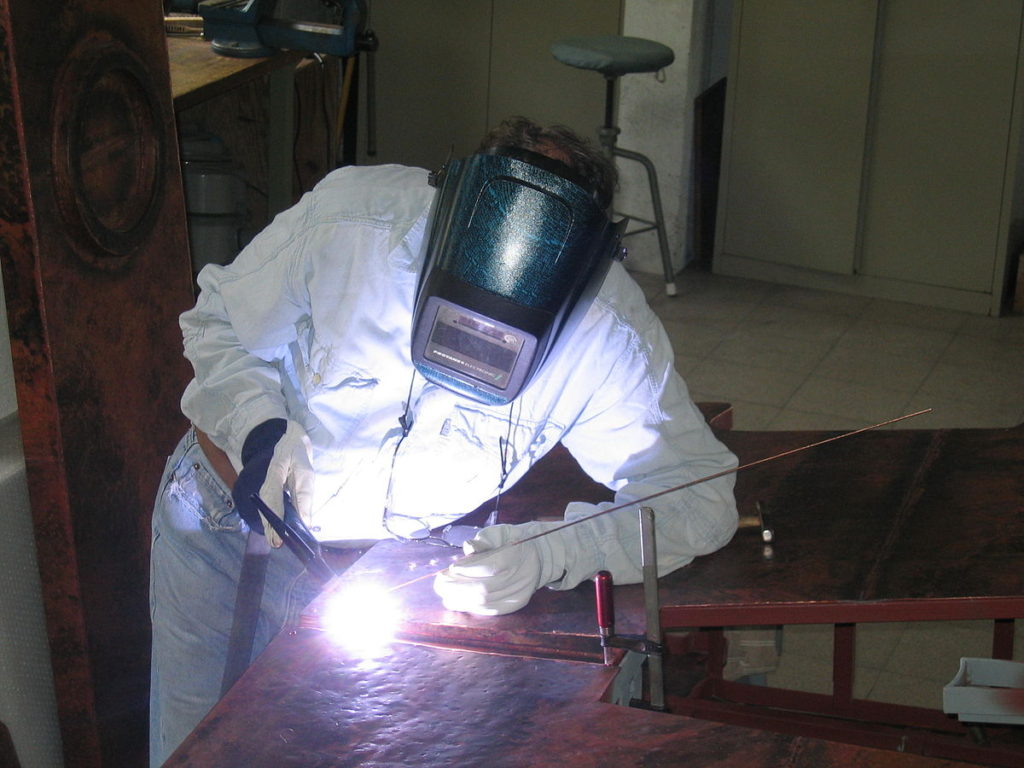
TIG (Tungsten Inert Gas) is a type of welding that was once known as Heliarc because it used gas. However, when it was uncovered that argon was more appropriate, it was renamed TIG because both helium and argon are inert gases. However, in today’s world, hydrogen has been added, which means it is no longer inert and hence shouldn’t be called TIG anymore. Rather, the official name is now GTAW. However, when people speak of stellite welding, they usually still say TIG. Moreover, according to BestOfMachinery, TIG is also as successful as MIG (metal inert gas) welding as both are commonly used welding machines in different industries today. However, using either MIG or TIG would depend on one’s welding skill level.
What Is TIG?
Let’s learn the basics of TIG welding: TIG welding is similar to gas welding, as the welder holds a torch in one hand and the filler rod in the other. It is harder than arc welding, however, as two hands have to be used. Furthermore, a foot pedal is often needed as well, making it even more difficult. The TIG torch is air or water cooled and also provides welding current and shielding gas to the internal copper parts and the weld puddle. IT has a tungsten electrode that is very sharp. The heat of the torch makes the metal melt, creating a weld puddle. The arc, meanwhile, is shielded using helium, argon, or both, and hydrogen can be added in certain alloys as well, to improve puddle flow. The arc, when using DC current, is quiet, smooth, and clean. With AC current, it is a bit noisier, although it remains smooth and clean.
What Can TIG Welding Be Used on?
TIG can be used on almost any type of metal. This includes low alloy steels and carbon, stainless steel, chromoly steel, nickel alloys, aluminum alloys, magnesium alloys, titanium alloys, coper alloys, pure copper, and cobalt alloys, including stellite.
Learning to TIG Weld
Becoming a TIG welder requires special skills. You can find a lot of information on how to become a TIG welder online. However, simply reading information online will not teach you to become a welder. There are some excellent TIG training resources out there, however, including DVDs and books. But the reality is that you will never learn to TIG weld unless you practice, practice, practice. Also, any TIG welder will tell you to always remember the 3 Cs when it comes to the metal that you want to weld, and that is “Clean, Clean, Clean”.
What Is Stellite
One particular alloy that is often welded using TIG methods is Stellite. It is a corrosion resistant, non-magnetic type of cobalt alloy that can be made up of various different compositions. Metal workers optimize it depending on how it will be used. The alloy was originally created by Kennametal Stellite, who still outline the different types of stellite alloys that exist, and how these should be used. Currently, it is often used for cutting tools, where Stellite 100 is the most appropriate. This is because Stellite 100 is very hard and remains sharp even if the temperatures increase by a lot. Furthermore, it resists annealing and hardening. Other forms of Stellite have higher degrees of temperature resistance, corrosion resistance, or wear resistance, to name but a few.